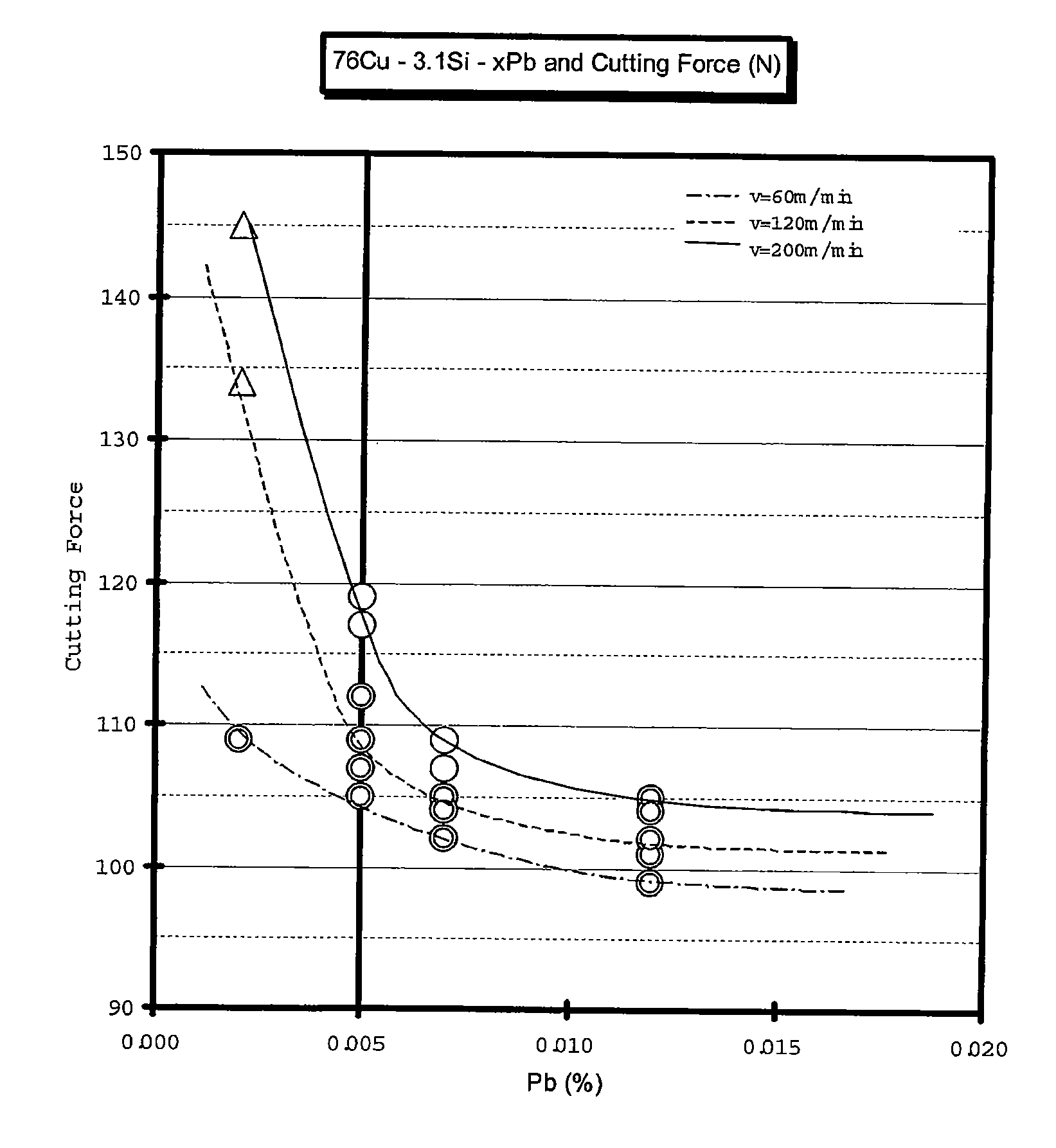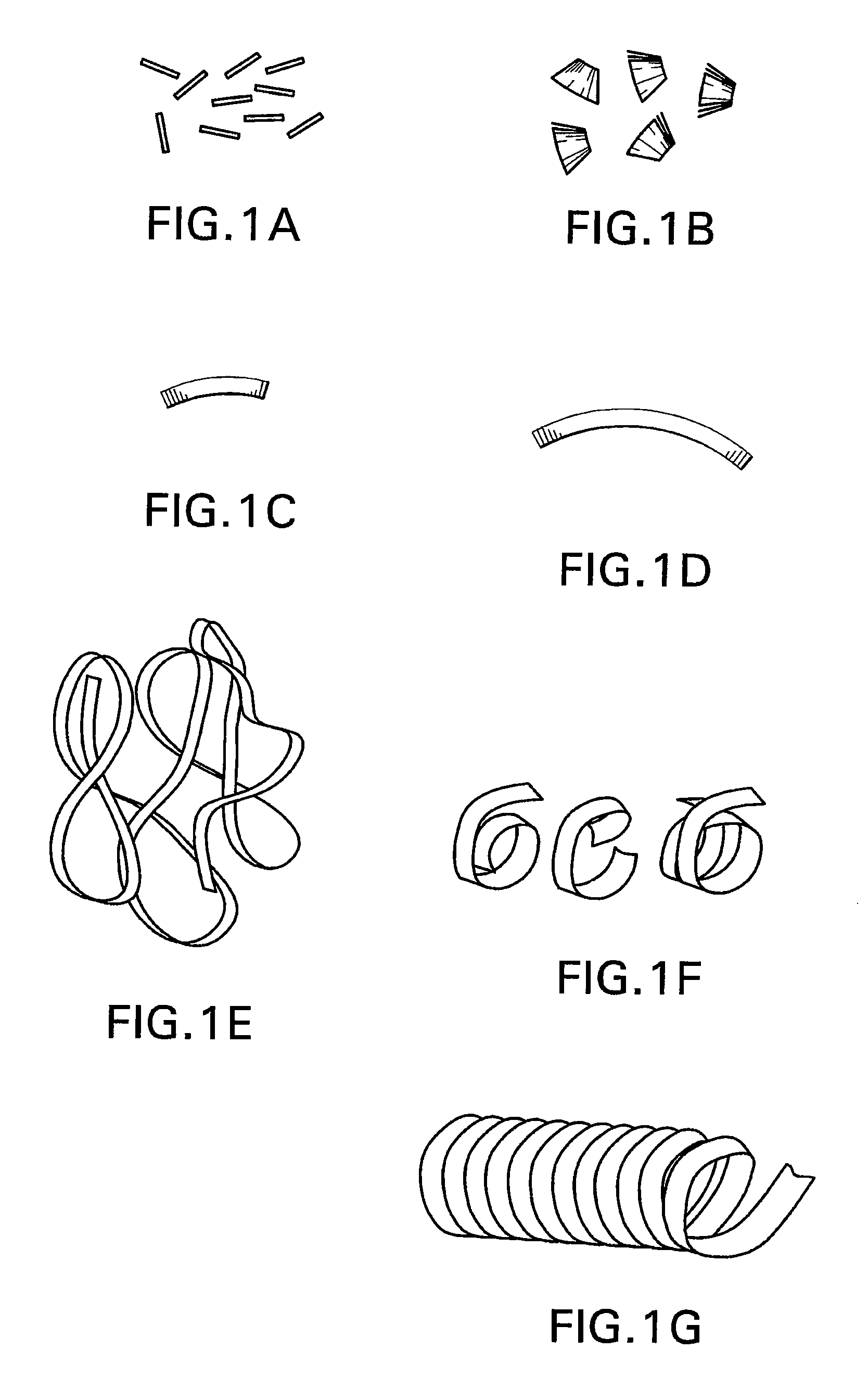Free-cutting copper alloy containing very low lead
a technology low lead content, which is applied in the field of free-cutting copper alloys, can solve the problems of reducing cutting resistance, reducing cutting force, rough cutting surface, etc., and achieves excellent machinability and large lead conten
- Summary
- Abstract
- Description
- Claims
- Application Information
AI Technical Summary
Benefits of technology
Problems solved by technology
Method used
Image
Examples
Embodiment Construction
[0069] The invention alloys each include copper, silicon, zinc and lead. Certain invention alloys additionally include other component elements, such as phosphorous, tin, antimony, arsenic, aluminum, bismuth, tellurium, selenium, manganese and nickel. Each of these elements bestow certain advantages to the invention alloys. For instance, copper is a major constituent element of the invention alloys. On the basis of studies performed by the present inventors, it was determined that a desirable copper content is between about 71.5 to 78.5 percent, by weight, in order to maintain certain inherent properties of a Cu—Zn alloy, such as certain mechanical properties, corrosion resistance property, and flowability. In addition, this copper range permits effective formation of gamma and / or kappa phases (and in some cases, a mu phase) in the metal construction when silicon is added, which results in industrially satisfactory machinability. However, the upper threshold limit for copper is set ...
PUM
| Property | Measurement | Unit |
|---|---|---|
| diameter | aaaaa | aaaaa |
| diameter | aaaaa | aaaaa |
| diameter | aaaaa | aaaaa |
Abstract
Description
Claims
Application Information
 Login to View More
Login to View More - R&D
- Intellectual Property
- Life Sciences
- Materials
- Tech Scout
- Unparalleled Data Quality
- Higher Quality Content
- 60% Fewer Hallucinations
Browse by: Latest US Patents, China's latest patents, Technical Efficacy Thesaurus, Application Domain, Technology Topic, Popular Technical Reports.
© 2025 PatSnap. All rights reserved.Legal|Privacy policy|Modern Slavery Act Transparency Statement|Sitemap|About US| Contact US: help@patsnap.com



